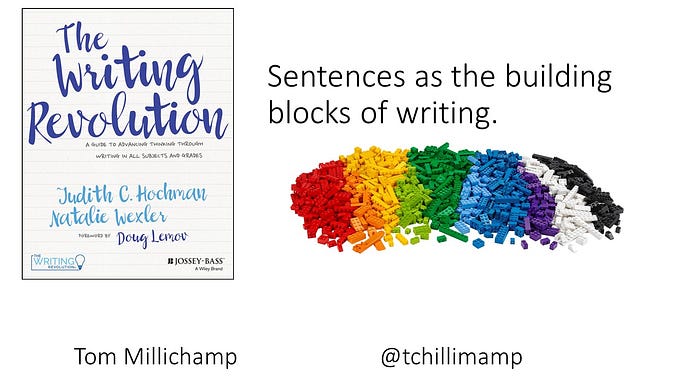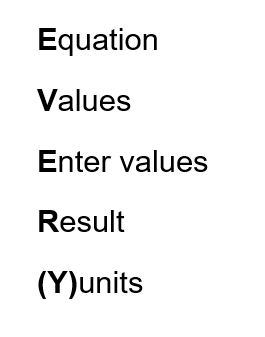Anatomy of a SLOP calculation sheet
Ever since I started teacher training, I’ve been trying to hone a SLOP (Shed Loads Of Practice) worksheet for GCSE students to practice calculations in Physics. I thought it might be time to get some wider feedback on what I’ve been doing. I’ve been trying to base it on my understanding of CogSci principles and I’ve pinched an awful lots of ideas from people in the CogSciSci group.
I’ll discuss my sheet of density questions (Link). Now I’ve looked back on it, I can immediately see that there are problems with it which I’ll point out as I go along. Justifying my choices for each part has really made me think about what I’m wanting students to achieve and this self-reflection alone has helped to steer me for further sheets. The aim of this blog is to get further comments on how to improve.
Section 1: Simple declarative questions

I tend to start a sheet with simple declarative questions based on the formula we’re using, focussing on definitions of words and the units involved. My aim here is to make the sheet approachable for all students to begin with. We’ll have begun the learning by going over the formula, demonstrating what we typically use it for (1kg of feathers vs 1kg of gold for example). Especially with density, I would be aiming for students to really think about the units being used: how do the units of mass and volume come together to give rise to the units of density? I’d be likely to wander around and check some answers before bringing the class together early on to ensure everyone is on the right track still, but maybe the sheet could be more explicit here. Feedback welcomed on this.
Section 2: Setting up of procedural questions through faded examples

After some ‘I do’-style worked examples with the class separately to the sheet, we would work through some faded examples. The aim here is to develop their procedural knowledge of performing the calculations. To reduce the cognitive load (as best I can), we have a five-step method that I’ve called EVERY (and I feel like I’ve pinched this from someone either in its entirety or in part, please let me know if this is the case so I can credit you): Equation, Values, Enter values, Result, (Y)units. This might be a blog for another time, but the aim is to give students a simple scaffold that they can use EVERY time they do a calculation (see what I was going for there?). Depending on the class, we might even do these together as a class using the visualiser (as I’m one of those visualiser people) as a ‘We do’.
Section 3: Focus on the procedure of the calculations

Then we’d have some solo practice of the procedure using a table of values (‘You do’). The values in the table change very slowly and deliberately, following from the way I’ve seen maths teachers use small variations in their problem sets. I’ve found that students need an initial nudge to interpret the table and with this in mind, I always include a complete worked example of one of the questions at this stage.
Hopefully the reasoning behind the table will become clear in the next section but this is one of the areas on which I’d love to have some feedback. Is a table of values lightening the cognitive load for students, allowing them to focus on procedure? Or is detaching the calculations from a ‘real scenario’ preventing students from forming schemata about the idea of density? My thinking is that I want students to focus on the calculation procedure itself at this point, and so detaching the calculations from physical scenarios is putting the students attention where I want it.
Section 4: Linking calculations back to declarative knowledge

To balance the procedure-heavy start, I use the previous calculations to focus on the declarative knowledge of the underlying mechanism that the formula for density is trying to distil. I’m forcing the students to look back on their answers to the previous questions and link them to the physical idea of density. This is another area where your feedback would be appreciated: how can I help students link calculations to a deeper understanding of the phenomena. I know a lot of students tend to guess either higher or lower for the answers without thinking and not connect with the initial questions on the level that I’m hoping for. I’ve really tried to focus their attention to the relevant parts without directly giving them the answer by pointing out which questions they should be looking at.
Section 5: General problems and interleaving

The final part of the sheet is a more standard type of question you might see on other SLOP style sheets, linking the questions to physical scenarios. I’ve included an interleaving of old topics to try and strengthen the connections between new and old ideas but tried to signpost these with ‘Old Content’ to ensure students don’t try to plough ahead using the same density formula for each one.
This is the section which I think is most flawed though due to the lack of attention I’ve paid to the conversion of units and the rearranging of formula. Within the lesson I would have stopped beforehand to demonstrate some worked examples of these ideas, but maybe the sheet could be more explicit about conversions and rearranging… or is this a desirable difficulty?
Your feedback on this would be massively appreciated. I know how nuanced a lot of CogSci principles are, and I’ve tried to point out where my understanding shows that certain principles are seemingly opposed to one another within the sheet. So your feedback may well be on my misunderstanding of the CogSci principles themselves.








